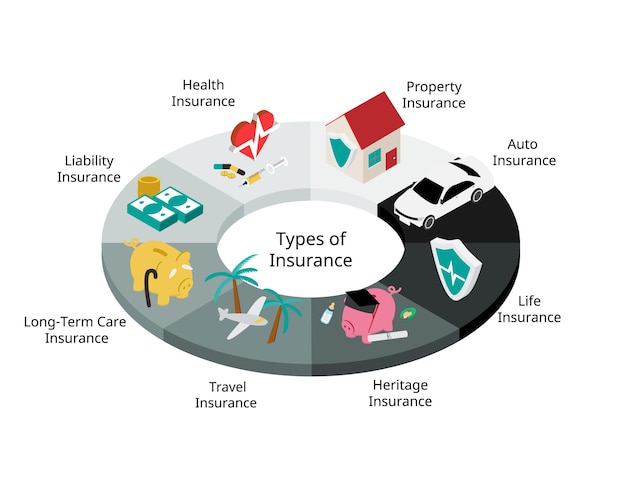Medicare Part D Changes 2025: What You Need to Know

Understanding the New Medicare Part D Prescription Drug Plan Changes for 2025 involves significant updates aimed at lowering drug costs and improving access, including a $2,000 cap on out-of-pocket expenses and enhanced premium stabilization measures.
Navigating the complexities of healthcare can be daunting, especially when it comes to prescription drug coverage. The recent changes to Understanding the New Medicare Part D Prescription Drug Plan Changes for 2025 aim to alleviate some of the financial burden and improve access to medications for millions of Americans. Let’s delve into the specifics of these changes and what they mean for you.
What are the Key Changes to Medicare Part D in 2025?
The landscape of Medicare Part D is set to undergo a significant transformation in 2025, bringing with it a series of changes designed to enhance affordability and accessibility for beneficiaries. These reforms address long-standing concerns about high drug costs and aim to provide more financial security for those who rely on prescription medications.
These changes are primarily driven by provisions in the Inflation Reduction Act, which empowers Medicare to negotiate drug prices and introduces several cost-saving measures. Let’s explore some of the key changes you can expect to see in 2025.
Out-of-Pocket Spending Cap
One of the most significant changes is the implementation of a $2,000 cap on out-of-pocket prescription drug costs. This means that once a beneficiary spends $2,000 on covered medications, they will no longer be responsible for any further costs for the remainder of the year. Here’s what you need to know:
- Impact: This cap provides substantial financial relief for individuals with chronic conditions or those who require expensive medications.
- Eligibility: The cap applies to all beneficiaries enrolled in a Medicare Part D plan.
- Implementation: The cap will be automatically applied, and beneficiaries will not need to take any additional steps to receive this benefit.
Medicare Negotiation of Drug Prices
For the first time, Medicare will have the authority to negotiate drug prices directly with pharmaceutical companies. This negotiation process is expected to lower drug costs for many commonly used medications. Key points include:

How Will These Changes Affect Your Premiums and Costs?
Understanding how these reforms will impact your monthly premiums and overall healthcare expenses is crucial. While some changes are aimed at reducing costs, others may have a more nuanced effect on your financial obligations.
The introduction of the $2,000 out-of-pocket cap and the Medicare negotiation of drug prices are expected to contribute to lower costs for many beneficiaries. However, it’s important to consider how these changes might affect your specific plan and individual circumstances.
Premium Stabilization Measures
To help stabilize premiums, the Inflation Reduction Act includes provisions that aim to moderate premium increases. These measures include:
- Risk Corridor Adjustments: Adjustments to the risk corridor program will help protect Part D plans from unexpected high costs, which can, in turn, lead to more stable premiums.
- Manufacturer Rebates: Pharmaceutical manufacturers will be required to provide rebates to Medicare for certain drugs, which will also help reduce overall costs.
- Increased Government Subsidies: The federal government will increase subsidies for low-income beneficiaries, further reducing their financial burden.
Changes to the Catastrophic Coverage Phase
The catastrophic coverage phase of Part D, which provides financial assistance after a beneficiary has incurred significant out-of-pocket costs, is also undergoing changes. In 2025:
- Elimination of the 5% Coinsurance: Beneficiaries will no longer be responsible for the 5% coinsurance in the catastrophic phase.
- Shifted Responsibility: The responsibility for costs in the catastrophic phase will shift towards the government and Part D plans, reducing the financial burden on beneficiaries.

Navigating the Medicare Part D Coverage Phases
Medicare Part D coverage is structured into several distinct phases, each with its own cost-sharing requirements. Understanding these phases is essential for effectively managing your prescription drug expenses. The phases include the deductible, initial coverage, coverage gap (also known as the “donut hole”), and catastrophic coverage.
As the Part D program evolves with the new changes in 2025, it’s vital to know how each phase will be affected and what your responsibilities will be at each stage.
Deductible Phase
The deductible phase is the first stage of Part D coverage. During this phase, you are responsible for paying the full cost of your prescription drugs until you meet your plan’s deductible. Some plans may have no deductible, while others may have a deductible as high as several hundred dollars. Key considerations include:
- Deductible Amount: Check your plan’s details to determine the specific deductible amount.
- Covered Drugs: Some plans may cover certain preventive medications even before you meet the deductible.
Initial Coverage Phase
Once you meet your deductible, you enter the initial coverage phase. During this phase, you pay a copayment or coinsurance for your covered drugs, and your Part D plan pays the remaining costs. The amount you pay depends on your plan’s specific cost-sharing structure. Points to keep in mind are:
Coverage Gap (Donut Hole)
The coverage gap, often referred to as the “donut hole,” is a phase where you may have to pay a higher share of your prescription drug costs. However, the Inflation Reduction Act has significantly reduced the impact of the coverage gap. Notably:
Strategies for Choosing the Right Medicare Part D Plan
Selecting the right Medicare Part D plan can be a complex decision, as different plans offer varying levels of coverage, cost-sharing arrangements, and formularies. However, with careful evaluation and strategic planning, you can find a plan that meets your individual needs and budget.
Start by assessing your current medication needs and anticipated healthcare expenses. Consider factors such as the types of drugs you take, their costs, and the frequency with which you need them. This will help you identify plans that offer comprehensive coverage for your specific medications.
Reviewing Plan Formularies
A plan’s formulary is a list of covered drugs. When choosing a Part D plan:
- Check Medication Coverage: Always review the plan’s formulary to ensure that your medications are covered.
- Tiered Formularies: Understand how the plan’s tiered formulary structure affects the cost of your drugs.
Comparing Costs and Coverage
Cost is a significant consideration when choosing a Part D plan. Compare the following:
- Premiums: Consider the monthly premium of each plan.
- Deductibles: Look at the plan’s deductible amount.
- Copayments and Coinsurance: Compare the copayments and coinsurance for your medications.
Considering Your Specific Needs
When selecting a Part D plan, consider:
- Healthcare Needs: Evaluate your current and anticipated healthcare needs.
- Budget: Choose a plan that fits comfortably within your budget.
- Pharmacy Access: Ensure the plan offers convenient access to pharmacies in your area.
Maximizing Your Medicare Part D Benefits
Once you’ve enrolled in a Medicare Part D plan, it’s important to take steps to maximize your benefits and ensure you’re getting the most value for your money. This involves staying informed about your plan’s coverage rules, understanding how to navigate the different coverage phases, and utilizing available resources to help manage your prescription drug costs.
Regularly review your plan’s formulary to stay updated on any changes to covered drugs and cost-sharing arrangements. Take advantage of available discounts and assistance programs to lower your out-of-pocket expenses.
Staying Informed About Plan Changes
Medicare Part D plans can change their formularies, premiums, and cost-sharing arrangements each year. To stay informed:
- Annual Notices: Review the annual notice of change that your plan sends each fall.
- Plan Updates: Monitor your plan’s website for any updates or announcements.
Utilizing Extra Help Programs
If you have limited income and resources, you may be eligible for Extra Help, a program that helps pay for prescription drug costs. Extra Help can significantly reduce your premiums, deductibles, and copayments. To determine eligibility find out if:
- Income Limits: Review the income limits for the Extra Help program.
- Application Process: Contact the Social Security Administration to apply.
Generic Medications and Cost-Saving Tips
Consider using generic medications whenever possible, as they are typically less expensive than brand-name drugs. Other cost-saving tips include:
- Mail-Order Pharmacies: Use mail-order pharmacies for long-term medications.
- Drug Assistance Programs: Explore patient assistance programs offered by pharmaceutical manufacturers.
| Key Point | Brief Description |
|---|---|
| 💰 Out-of-Pocket Cap | $2,000 limit on annual expenses. |
| 💊 Drug Price Negotiation | Medicare can negotiate prices with drug companies. |
| 📊 Premium Stabilization | Measures to keep premiums stable. |
| 🍩 Coverage Gap Changes | The coverage gap (donut hole) being phased out. |
How will the $2,000 out-of-pocket cap work?
▼
The $2,000 out-of-pocket cap on prescription drug costs takes effect in 2025. Once you reach this limit, you won’t have to pay any more for covered drugs for the rest of the year.
▼
Medicare’s negotiation of drug prices aims to lower the cost of certain high-priced medications. This could lead to lower copays and overall savings for beneficiaries who take these drugs.
▼
If you have limited income and resources, you may be eligible for the Extra Help program, which helps pay for Medicare prescription drug costs, including premiums, deductibles, and copayments.
▼
Yes, the changes will affect all Medicare Part D plans. Plans will need to adjust their coverage and cost-sharing arrangements to comply with the new rules, such as the out-of-pocket cap.
▼
You can find more information about these changes on the official Medicare website, through your current Part D plan, or by contacting the Social Security Administration for details on the Extra Help program.
Conclusion
Understanding the New Medicare Part D Prescription Drug Plan Changes for 2025 is essential for making informed decisions about your healthcare coverage. By familiarizing yourself with these reforms, you can take steps to maximize your benefits and ensure access to affordable prescription medications. Stay informed, review your options, and choose a plan that meets your individual needs.
